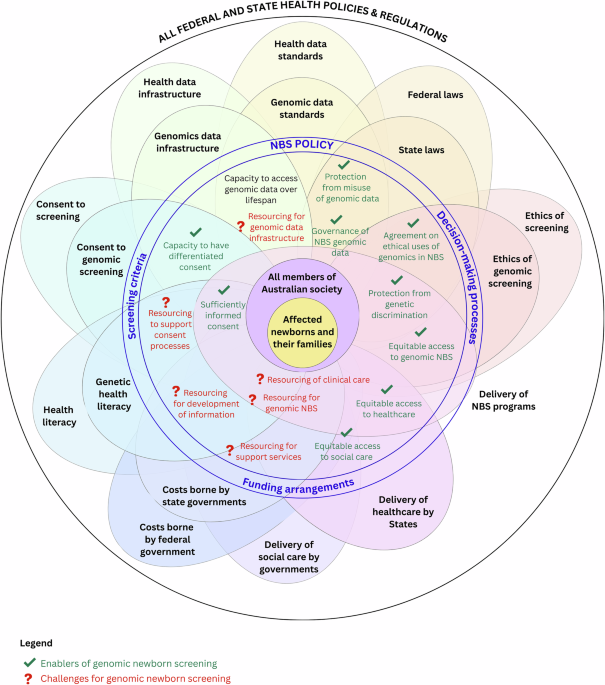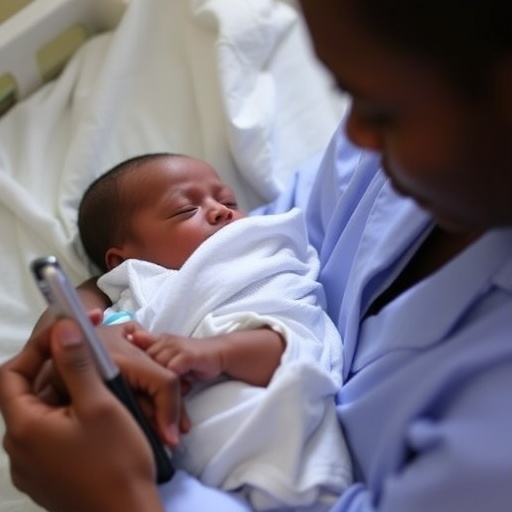:max_bytes(150000):strip_icc()/Health-GettyImages-1396284957-9fee60725dae400fa1089696425b4dd7.jpg)
People in the LGBTQ+ community face health disparities due to prejudice, lack of access to care, and other factors. We all rely on healthcare services at various points in our lives. However, not everyone has the same access to medical advice and treatment. As a result, specific populations suffer poorer health outcomes than others.
Health disparities are how disease, injury, and violence affect marginalized groups of people, like those in the LGBTQ+ community, differently than others. Health disparities typically result from a lack of access to adequate healthcare.
In 2016, the National Institute on Minority Health and Health Disparities identified the LGBTQ+ community as a health disparity population. The LGBTQ+ community encompasses all races, ethnicities, religions, and social classes. And when an LGBTQ+ person belongs to another marginalized group—such as a person of color—it becomes even more challenging to find accessible, equitable care.
Here’s what you need to know about the seven main health disparities the LGBTQ+ community faces.
Daniel de la Hoz / Getty Images
Research has found that lesbian, gay, and bisexual adults have a higher risk of heart disease and other cardiac problems than others. Lesbian, gay, and bisexual adults may be more likely to smoke and have poorly controlled blood sugar, both of which contribute to heart disease.
Smoking increases the risk of coronary heart disease, stroke, lung cancer, and other health conditions. In 2016, the National Health Interview Survey found that 20.5% of lesbian, gay, and bisexual adults smoked. In comparison, the study found that 15.3% of heterosexual adults smoked.
Possible reasons why the LGBTQ+ community has higher rates of smoking include the stress of experiencing discrimination, direct marketing from cigarette makers, and spending more time in bars and other places where people smoke. Being part of a historically marginalized group also creates increased risks of other adverse health issues, such as long-term stress, poor sleep, mental health conditions, diabetes, obesity, and heart disease.
A mounting body of evidence shows that transgender people experience higher rates of violence than other groups. Additionally, transgender women have higher poverty rates. In turn, poverty increases the risk of prostitution, imprisonment, and violence.
Specifically, transgender people of color are more likely to experience violence than their White counterparts. Research has found that Black and Latin American transgender women experience higher rates of physical and sexual assault and murder rates than other groups.
Bisexual people also experience high rates of intimate partner violence.
Research suggests that substance misuse and substance use disorders are more prevalent in the LGBTQ+ community than in non-LGBTQ+ groups.
Research has found that people who identify as lesbian or gay are more than twice as likely as people who identify as heterosexual to misuse alcohol or tobacco. And people who identify as bisexual are three times as likely.
Also, some evidence suggests that transgender people are 2.5 times more likely to use drugs like methamphetamines and cocaine than cisgender people.
The added stress and discrimination this population experiences result in higher levels of depression, anxiety, and other mental health issues, which often lead to Increased rates of substance use. Additionally, barriers to healthcare, including mental health services and substance use treatment, exacerbate this issue, making recovery even more challenging.
Research has found that transgender or gender non-conforming (TGNC) adolescents are likelier to have attention deficit disorders and depressive disorders than non-TGNC youth. Other evidence suggests that LQBTQ+ people are more likely to have poorer mental health outcomes than heterosexual people.
“Queer and [transgender people] tend to be more prone to anxiety, depression, suicidality, eating disorders, and substance dependence, which are all the effects of systemic oppression,” Kristen Martinez, an LGBTQ+ affirmative counselor at Pacific NorthWell in Seattle, Wash., told Health.
Healthcare disparities could also lead to mental health issues in LGBTQ+ people.
“Remember that queer and trans folks have an understandable fear and mistrust of the health care system,” Martinez said. The Diagnostic and Statistical Manual of Mental Disorders (DSM), which helps diagnose mental health conditions, listed “homosexuality” as a disorder until 1973.
Transgender and non-binary people need a diagnosis of “gender dysphoria” (which was once known as “gender identity disorder”) so that insurance companies can cover gender-affirming health services. With that coverage, they can access life-saving and life-affirming treatments.
“If you are a [transgender person] who can’t find a provider to give you a pap smear due to systemic oppression, of course, that will be affecting your mental health and well-being, and how you see yourself and value yourself,” explained Martinez.
“If you have to teach your health care providers about the lived experience of being [transgender] or queer, that is a burden that should not be on your shoulders but often is,” continued Martinez. “On top of accessing care, having resources to pay for care, and more.”
Research has found that bisexual and lesbian women were more likely to be overweight or obese than women who identify as heterosexual. However, gay men are less likely to be overweight or obese than straight men.
Evidence suggests that eating and body image disorders may be more common among LGBTQ+ people than others.
“In comparison to their straight peers, LGBTQ+ individuals experience unique stressors such as bullying, harassment, fear of rejection, internalized homophobia, body image distress, barriers to accessing medical and mental health treatment, and violence,” Sydney Brodeur-Johnson, PhD, senior director for clinical services at the Veritas Collaborative in Dunwoody, Ga., told Health. “These stressors place them in a higher risk category for the development of eating disorders and other mental health issues.
Although there isn’t conclusive evidence, breast and cervical cancers may disproportionately affect the LGBTQ+ community.
For example, some research suggests that lesbian and bisexual women have a higher risk of breast cancer than others. Increased substance abuse, obesity, and stress among lesbian and bisexual women compared to the general population may contribute to that risk.
Also, other evidence suggests that lesbian and bisexual women are less likely to receive regular cervical cancer screenings than others. A lack of cervical cancer screenings among the LGBTQ+ community may lead to higher rates of cervical cancer.
Also, transgender men and non-binary people who can become pregnant may have less access to screenings and reproductive healthcare. Some evidence suggests that healthcare providers may assume a person’s biological sex based on appearance or gender expression.
In the United States, gay, bisexual, and other men who have sex with men (MSM) are most affected by the human immunodeficiency virus (HIV). Adolescent and adult gay and bisexual men made up 67% of new HIV diagnoses in the United States in 2022. Condomless sex is one of the most significant risk factors for getting or transmitting HIV.
Gay and bisexual men are also at a higher risk for other STIs than others. Chlamydia, syphilis, and gonorrhea also significantly increase the risk of getting or transmitting HIV.
Additionally, some evidence suggests that LGBTQ+ people are more likely to have the human papillomavirus virus (HPV). Gay, bisexual, and MSM are 20 times more likely than heterosexual men to develop anal cancer. Certain strains of HPV cause anal cancer. Also, some strains of HPV are the cause of cervical cancer. But it’s also a risk factor for anogenital cancers. HPV also links to head and neck malignancies due to transmission of the virus via oral sex.
“These health disparities tend to amplify due to the intersectionality of oppression,” explained Martinez.
In 2017, the Center for American Progress published a nationally representative survey of LGBTQ+ people. The survey found that nearly one in 10 LGBTQ+ individuals reported that a healthcare professional refused to see them in the prior year. Those individuals attributed the discrimination to their actual or perceived sexual orientation.
In the same survey, almost three in 10 transgender people reported that healthcare providers would not see them because of their gender identity.
Laura Durso, PhD, chief learning officer and executive director of Whitman-Walker Health in Washington, told Health that various factors might contribute to LGBTQ+ people not having equal access to essential medical services, like mammograms and other screening tests.
“Lack of access to health insurance and quality coverage, greater vulnerability to poverty, and unwelcoming and discriminatory social environments all play a role,” explained Durso.
Awareness among healthcare providers and the larger public is key to reducing health disparities.
On a systematic level, it’s paramount to better educate medical, mental health, and social service providers on the unique needs and challenges of people in the LGBTQ+ community, such as how to provide affirming care. More scientific research is also needed to study specific health issues relating to this underserved population.
For individuals, it’s important to find support and ways to self-advocate for the care you need.
Healthcare Resources
When people experience discrimination, they are more likely to avoid healthcare providers. Postponing preventative care and medical treatment and living under long-term stress further exacerbates health disparities.
Whether you or a loved one has experienced discrimination in a healthcare setting or not, your fear is valid, Stephen Abbott, MD, an infectious disease specialist at Whitman-Walker Health, told Health.
“My advice is to seek out LGBTQ+ health resources and directories,” said Dr. Abbott. “GLMA: Health Professionals Advancing LGBTQ+ Equality [previously known as the Gay & Lesbian Medical Association] maintains an LGBTQ+ inclusive provider directory.”
You can also search for organizations that advocate for and provide direct health services to LGBTQ+ populations in your state. Some examples include the Health Equity Alliance in Maine and the University of California San Francisco Center for LGBT Health & Equity.
Also, The Trevor Project is a non-profit organization that provides crisis intervention and suicide prevention services to LGBTQ+ adolescents. And Trans Lifeline is a hotline run by and for transgender people. The LGBT National Help Center offers free, confidential peer support and information on local resources to help with anything from coming out issues to sexual abuse.
For more help, visit the Human Rights Campaign, which offers several important resources for the LGBTQ+ community.
People in the LGBTQ+ community face significant health disparities that impact quality of life, longevity, and overall health. These disparities include increased risk of heart disease, certain cancers, substance use, and mental health disorders. Discrimination, mistrust, and other barriers to care exacerbate these issues. Seeking out support and affirming care, prioritizing preventative healthcare, and asking for the care you need can help combat health disparities.
link







